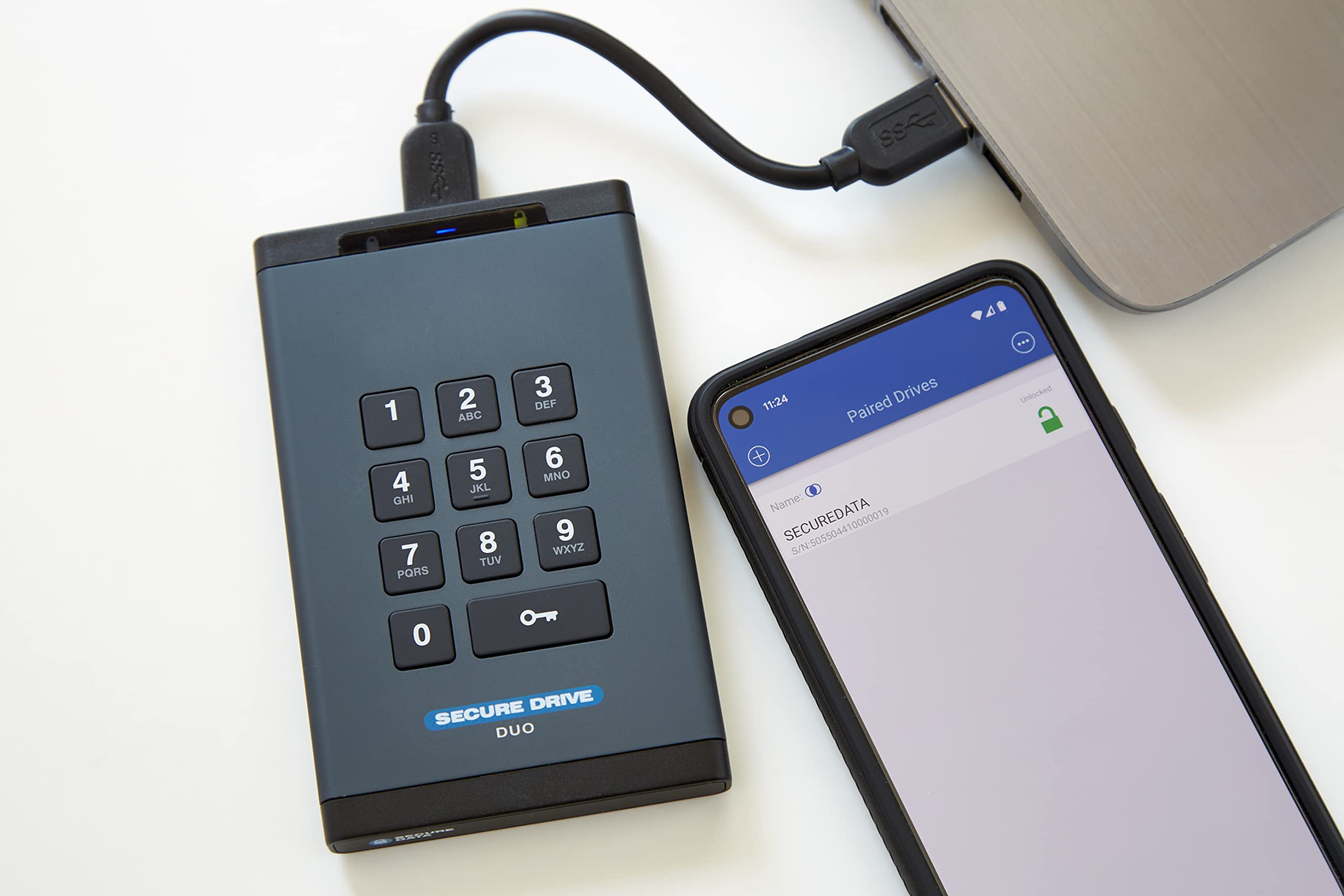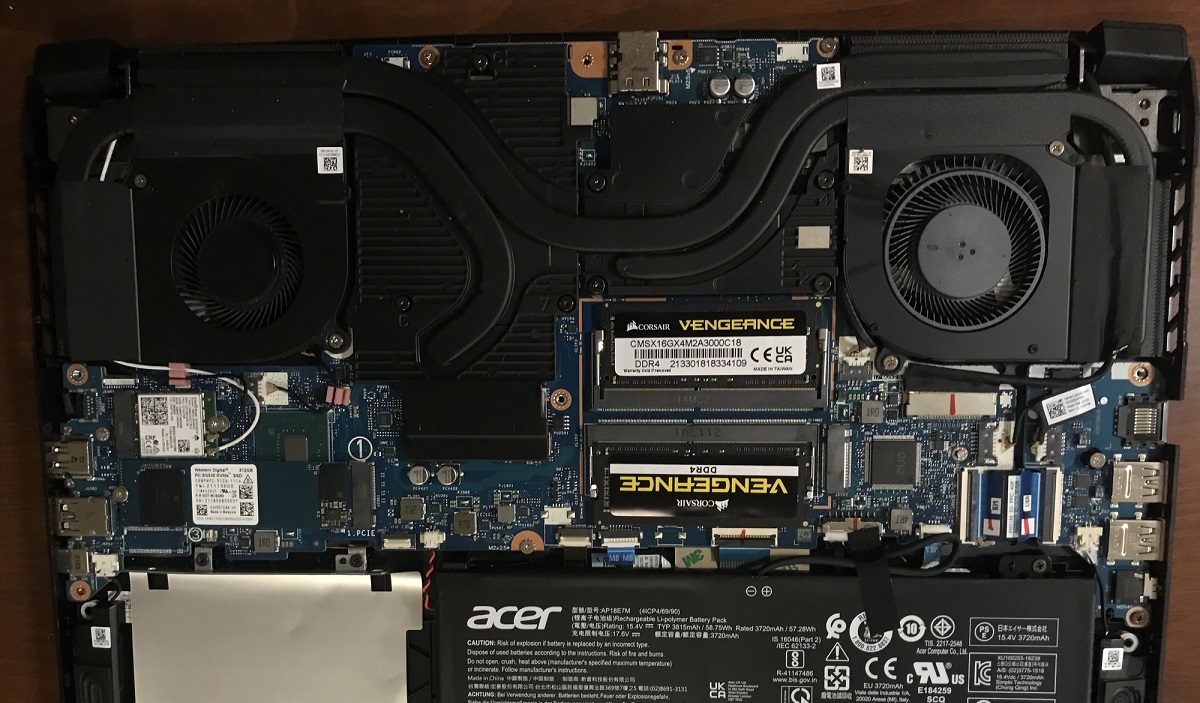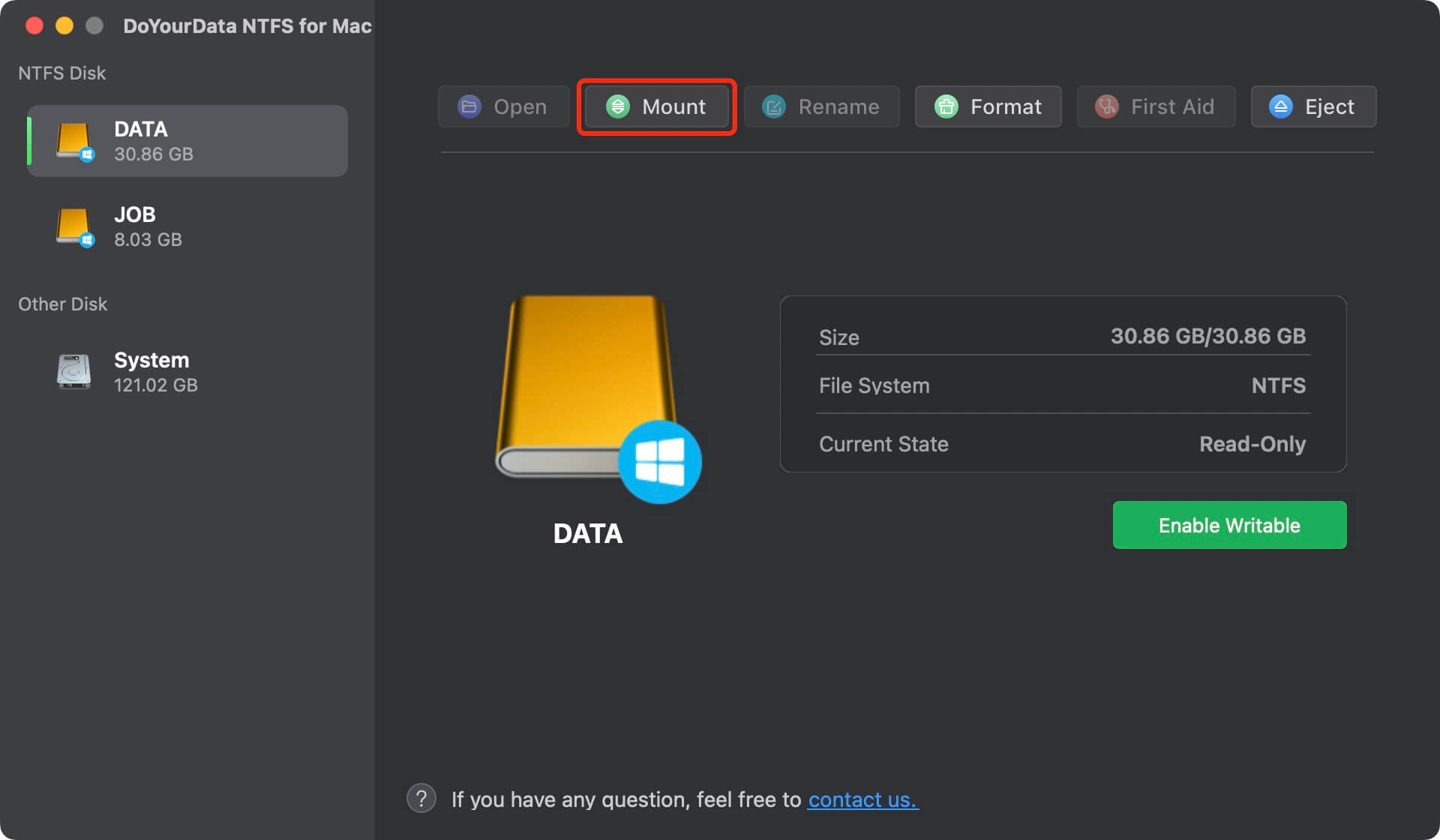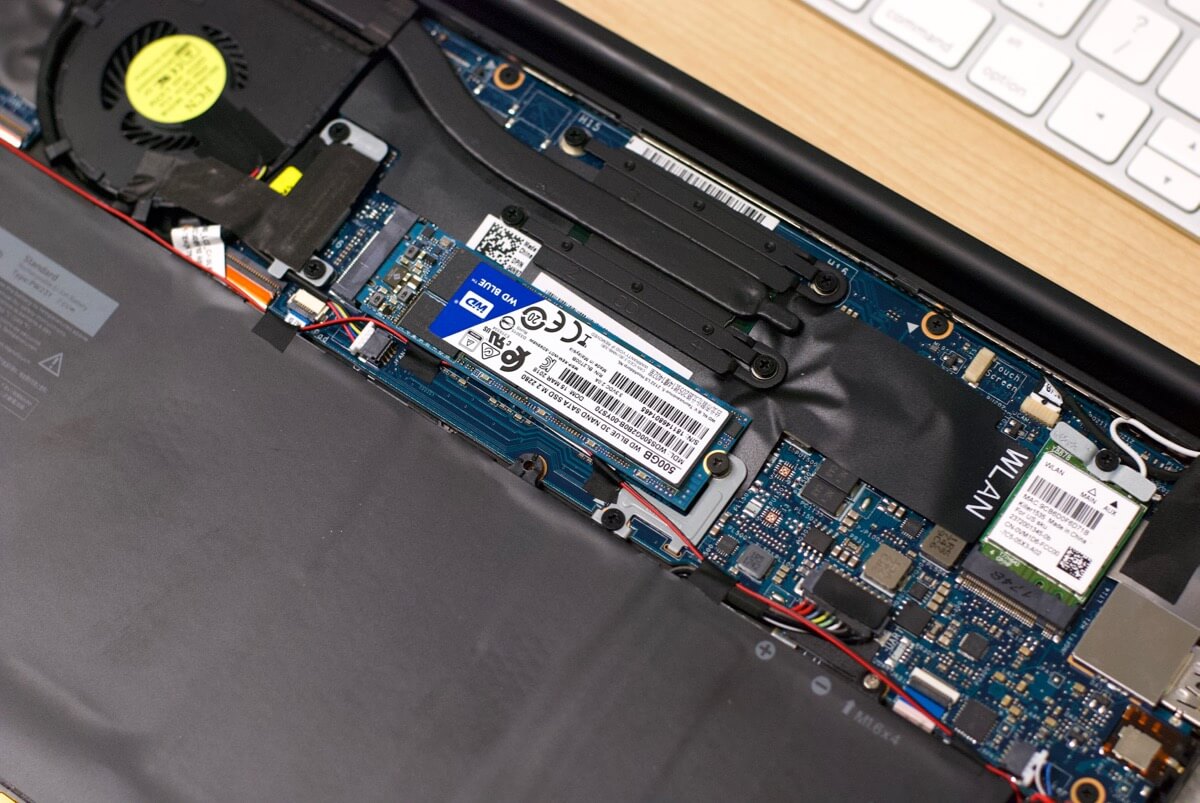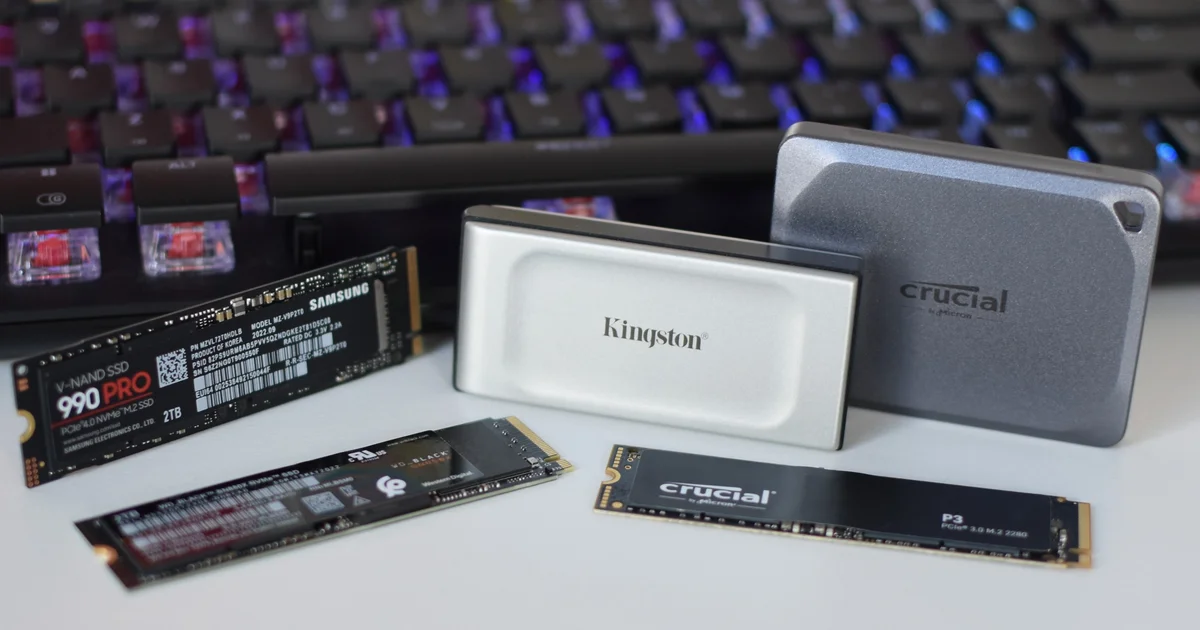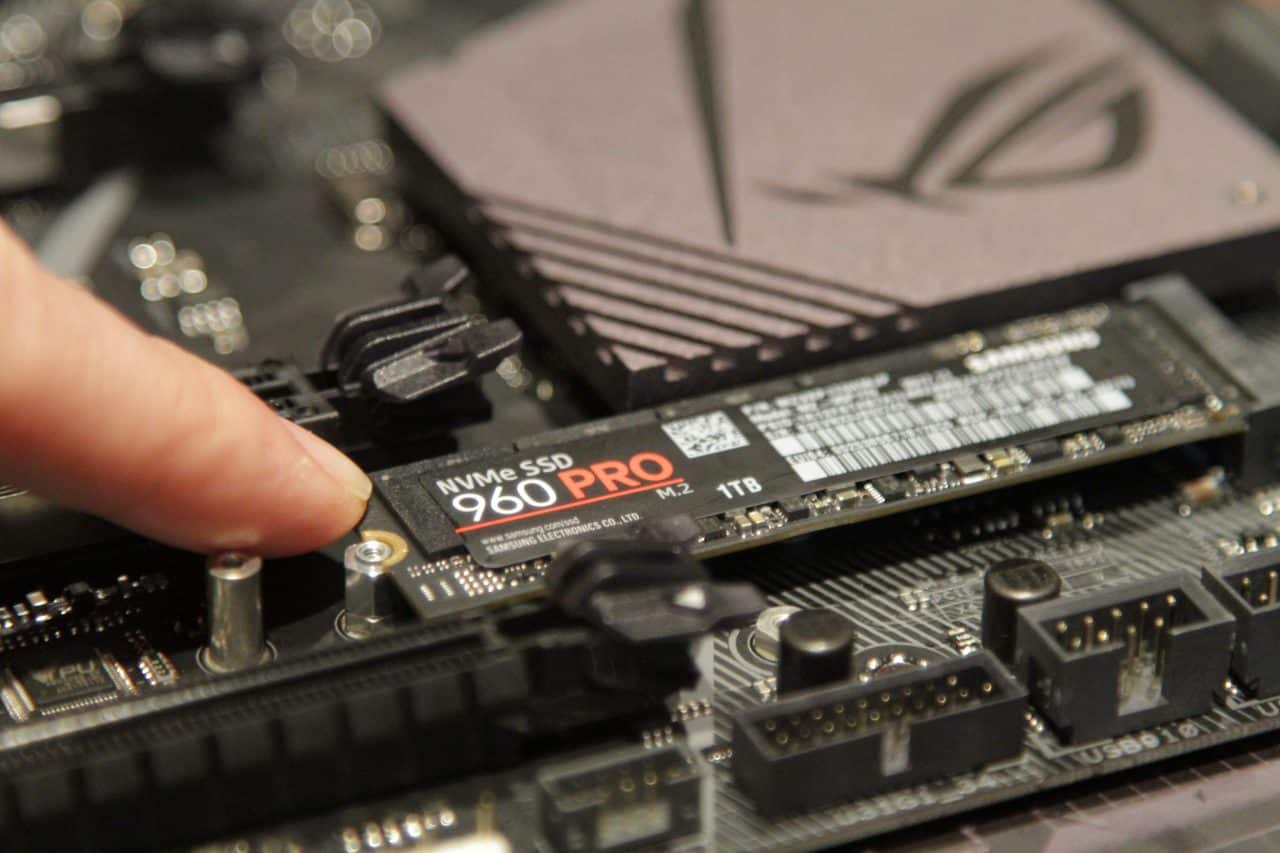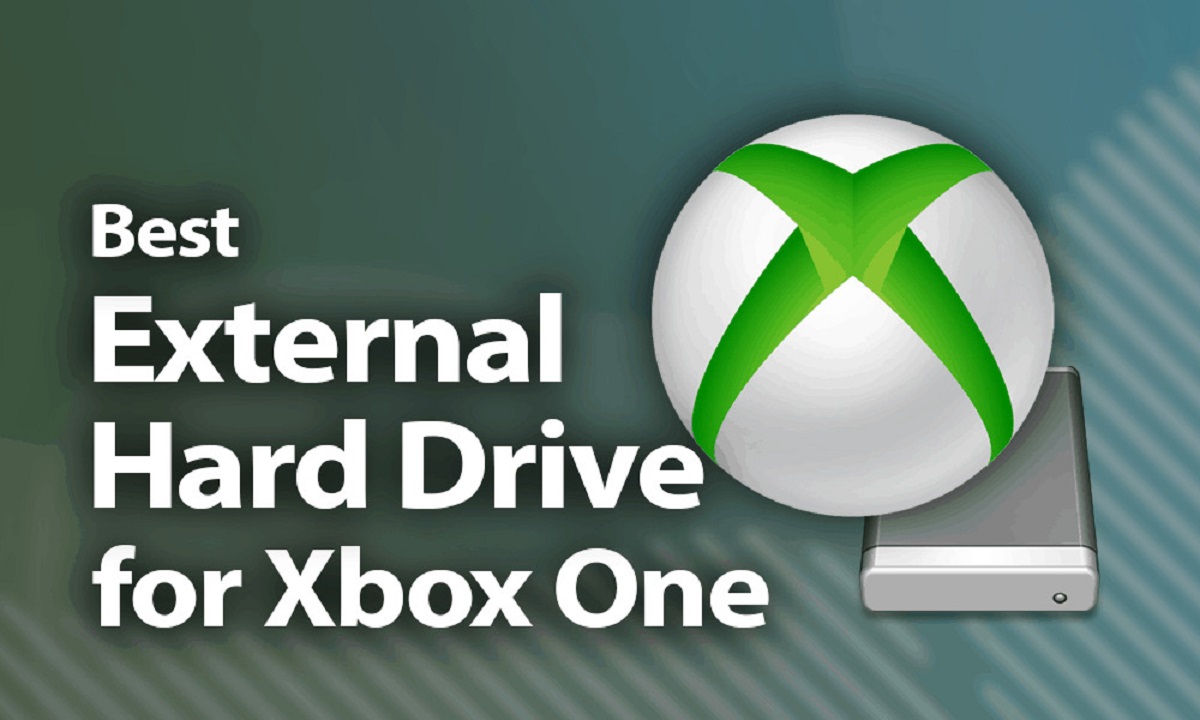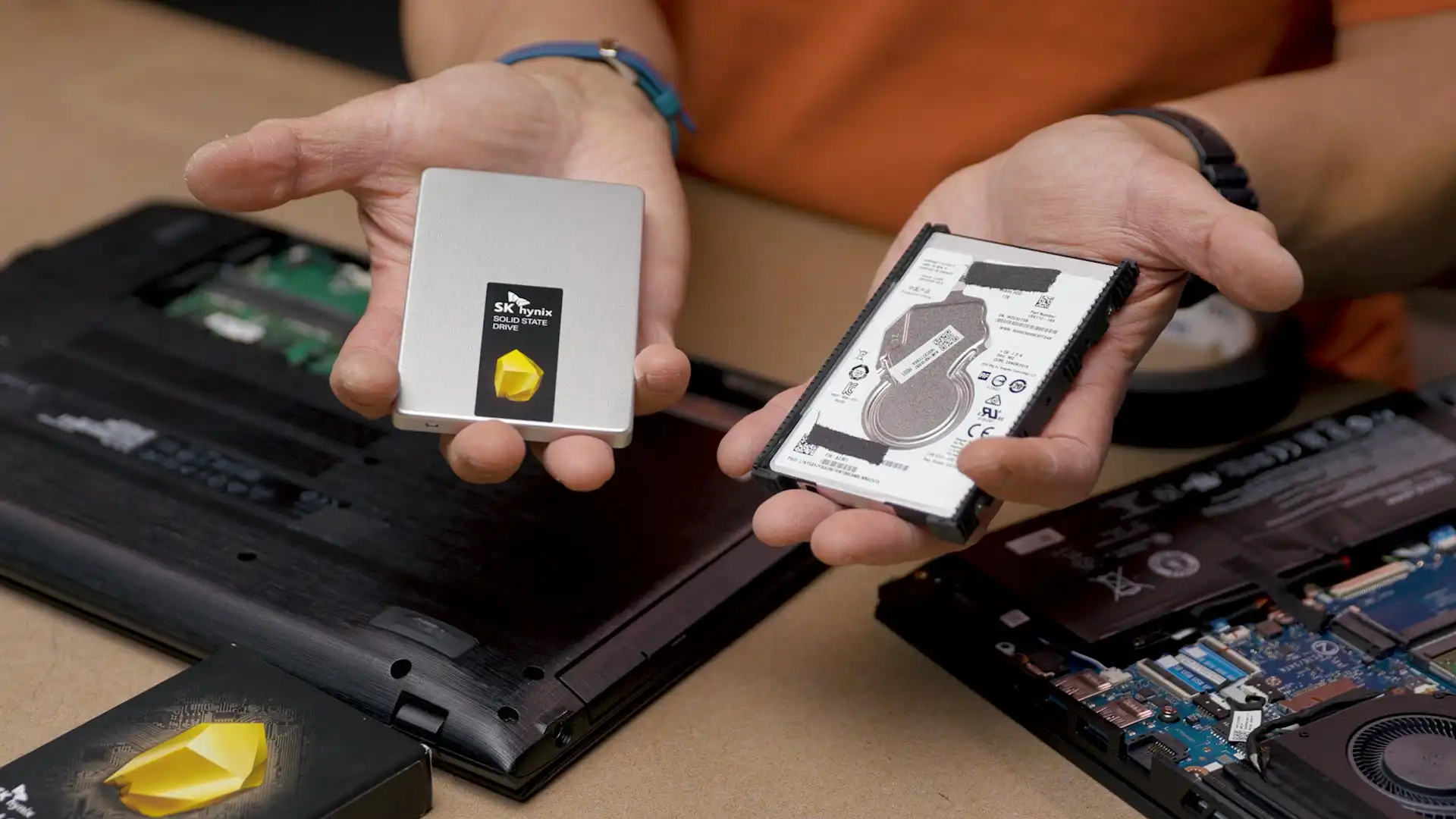Introduction
As technology continues to advance, solid-state drives (SSDs) have become the preferred storage solution for many computer users. With their faster performance, increased durability, and reduced power consumption compared to traditional hard disk drives (HDDs), SSDs offer numerous benefits.
However, there are instances where you may encounter situations where your SSD is locked and unable to access the data stored on it. This can be frustrating and can potentially lead to data loss if not resolved properly.
In this article, we will explore the various types of locks that can be encountered on a solid-state drive and provide step-by-step guidance on how to unlock them. Whether you are dealing with a password-protected SSD, a frozen SSD, a write-protected SSD, or an encrypted SSD, we will cover all the necessary instructions so that you can regain access to your valuable data.
Unlocking a solid-state drive requires a careful approach and attention to detail. It is crucial to follow the instructions precisely to avoid any further complications and ensure the security of your data. Now, let’s dive into the world of unlocking solid-state drives and discover how to resolve the various lock types that you may encounter.
What is a Solid State Drive (SSD)?
A solid-state drive, commonly referred to as an SSD, is a type of data storage device that uses flash memory to store data. Unlike traditional hard disk drives (HDDs) that use spinning disks and magnetic platters to store information, SSDs have no moving parts, making them faster, more reliable, and less prone to mechanical failures.
SSDs are designed to provide high-speed access to data, significantly improving the performance of computers and other electronic devices. They utilize NAND flash memory technology, which stores data in a grid of memory cells. Each cell can hold multiple bits of information, allowing SSDs to store a large amount of data in a compact form factor.
One of the main advantages of SSDs is their fast read and write speeds. This means that data can be retrieved and written to an SSD much quicker than with an HDD. As a result, applications load faster, files transfer more swiftly, and the overall system performance is greatly enhanced.
Another notable feature of SSDs is their durability. Since there are no moving parts involved, SSDs are more resistant to shocks, vibrations, and physical damage. This makes them ideal for portable devices such as laptops and tablets, as they are less likely to fail due to accidental drops or bumps.
Furthermore, SSDs consume less power compared to HDDs, which contributes to longer battery life in laptops and other battery-powered devices. This energy efficiency not only benefits the user by prolonging usage time, but it also reduces the environmental impact by conserving power.
In summary, a solid-state drive (SSD) is a data storage device that uses flash memory technology to provide faster performance, increased durability, and lower power consumption compared to traditional hard disk drives (HDDs). As technology continues to advance, SSDs are becoming increasingly popular as the storage solution of choice for both personal and professional use.
Why would you want to unlock a Solid State Drive?
There are several scenarios where you may find yourself needing to unlock a solid-state drive (SSD). Whether it’s a password-protected SSD, a frozen SSD, a write-protected SSD, or an encrypted SSD, unlocking it is essential to regain access to your data. Let’s explore some of the common reasons why you might want to unlock an SSD.
Password-protected SSD: If you have set a password to protect your SSD and you’ve forgotten it, you’ll need to unlock the drive to access your data. It’s crucial to follow the correct steps to regain access without losing any important files or compromising the security of your data.
Frozen SSD: Sometimes, an SSD can become “frozen” due to a firmware issue or an abrupt power loss. In this case, the drive may appear as locked, preventing you from accessing your files. Unlocking a frozen SSD involves resetting the SATA interface and restoring communication with the drive.
Write-protected SSD: If your SSD is write-protected, you won’t be able to make any changes or save new data to the drive. This can be frustrating, especially if you need to update files or install new software. Unlocking a write-protected SSD involves modifying the drive’s attributes to allow write access.
Encrypted SSD: With the increasing emphasis on data security, many users choose to encrypt their SSDs to protect their sensitive information. However, if you forget the encryption password or encounter issues with the decryption process, you’ll need to unlock the encrypted SSD to retrieve your data.
Unlocking a solid-state drive requires careful attention and adherence to the specific instructions for each type of lock. It’s important to remember that data security and the integrity of your files should always be a top priority. Following the correct procedures will not only help you regain access to your data but also prevent any potential data loss or damage.
In the following sections, we will provide detailed steps for unlocking each type of lock on a solid-state drive. By following these instructions carefully, you can overcome any lock-related issues and regain control over your valuable data stored on the SSD.
Step 1: Identify the type of lock on your SSD
Before you can proceed with unlocking your solid-state drive (SSD), it’s important to first identify the type of lock that it has. Understanding the specific lock will help determine the appropriate method for unlocking the SSD. Here are the different types of locks you may encounter:
Password-protected lock: This type of lock requires a password to access the SSD. If you are prompted for a password when attempting to access your drive, it is likely password-protected. You will need to follow the instructions for unlocking a password-protected SSD.
Frozen lock: A frozen lock occurs when the SSD becomes unresponsive due to a firmware issue or sudden power loss. If you are unable to access or interact with the SSD, and your computer recognizes it as locked, it may be frozen. You will need to follow the instructions for unlocking a frozen SSD.
Write-protected lock: When an SSD is write-protected, it prevents any new data from being written to the drive. If you receive an error message stating that the SSD is write-protected or you are unable to save changes to the drive, it is likely write-protected. You will need to follow the instructions for unlocking a write-protected SSD.
Encrypted lock: An encrypted SSD uses encryption algorithms to safeguard your data. Without the encryption key or password, you will be unable to access the encrypted data. If you have encrypted your SSD and are prompted to enter a password or encryption key to unlock it, you will need to follow the instructions for unlocking an encrypted SSD.
To determine the type of lock on your SSD, pay close attention to any error messages or prompts that appear when attempting to access or modify the drive. Additionally, referring to the SSD’s documentation or contacting the manufacturer’s support can provide further guidance in identifying the lock type.
Once you have determined the type of lock on your solid-state drive, you can proceed to the appropriate steps for unlocking it. In the following sections, we will provide detailed instructions for unlocking each type of lock, ensuring you regain access to your valuable data.
Step 2: Unlocking a password-protected SSD
If you have a password-protected solid-state drive (SSD) and you’ve forgotten the password, don’t worry. There are steps you can take to unlock the SSD and regain access to your data. Follow these instructions to unlock a password-protected SSD:
- Start by connecting the SSD to your computer. Ensure that the SSD is properly connected and recognized by your operating system.
- Open your computer’s BIOS settings by restarting your computer and pressing the designated key to access the BIOS. The key to enter the BIOS can vary depending on your computer’s manufacturer (common keys are F2, Del, or Esc).
- Within the BIOS settings, navigate to the security section or a similar tab that contains the SSD-related settings.
- Locate and select the option to remove or reset the SSD password. The exact wording and location of this option may vary depending on your computer’s BIOS.
- Follow the on-screen instructions to remove or reset the password for the SSD. This typically involves entering your current password or providing authentication, followed by confirming the password removal or entering a new password.
- Save the changes you made in the BIOS settings and exit the BIOS.
- Restart your computer and allow the operating system to boot up.
- Try accessing the SSD to ensure that it is now unlocked. You should be able to read, write, and copy files to and from the SSD without being prompted for a password.
Note that the steps provided here are a general guideline, and specific instructions may vary depending on your computer’s BIOS and SSD make and model. It’s always recommended to consult your computer’s manual or contact the SSD manufacturer’s support for more detailed instructions.
By following these steps, you should be able to successfully unlock a password-protected SSD. Remember to choose a secure password and keep a record of it in a safe place to avoid future lockouts. Now that your SSD is unlocked, you can access your data and continue using the drive normally.
Step 3: Unlocking a frozen SSD
If your solid-state drive (SSD) becomes “frozen,” meaning it becomes unresponsive and locked, you will need to take specific steps to unlock it. Follow these instructions to unlock a frozen SSD and regain access to your data:
- Power off your computer completely by shutting it down.
- Disconnect the power supply from your computer, ensuring that it is completely unplugged.
- Open your computer case and locate the SSD. Ensure that it is securely connected to the motherboard and power supply.
- Using an anti-static wristband or taking appropriate electrostatic discharge precautions, disconnect the SATA cable from the SSD.
- Locate the CMOS battery on your motherboard. It is a small, round battery that may have a clip holding it in place.
- Remove the CMOS battery from the motherboard. Leave it disconnected for about 5-10 minutes to allow the motherboard’s settings to reset.
- During this time, press and hold the power button on your computer for about 10 seconds to discharge any residual power.
- After the 5-10 minutes have passed, reinsert the CMOS battery back into its place on the motherboard.
- Reconnect the SATA cable to the SSD, ensuring it is securely connected.
- Reconnect the power supply to your computer and close the computer case.
- Power on your computer and allow it to fully boot up.
- Check if the SSD is now recognized by the operating system and accessible. It should be unlocked and ready for use.
By following these steps, you can potentially resolve the frozen state of your SSD and regain access to your data. It is important to note that if the SSD remains frozen after attempting these steps, there may be a more serious hardware or firmware issue. In such cases, it is recommended to seek assistance from a professional or contact the SSD manufacturer’s support for further guidance.
Remember to take necessary precautions when working with computer hardware and ensure that you are properly grounded to avoid any electrostatic damage. Following these steps carefully can help you unlock a frozen SSD and get back to using your drive without any further interruptions.
Step 4: Unlocking a write-protected SSD
If you find that your solid-state drive (SSD) is write-protected, preventing you from making any changes or saving new data to the drive, you will need to follow specific steps to unlock it. Here’s a guide on how to unlock a write-protected SSD:
- Ensure that you have administrative privileges on your computer. Only administrators can modify write protection settings.
- Open “File Explorer” or “My Computer” on your computer and locate the drive letter assigned to the write-protected SSD.
- Right-click on the drive icon and select “Properties” from the context menu.
- In the properties window, navigate to the “Security” or “Permissions” tab, depending on your operating system.
- Click on the “Edit” button to modify the permissions for the drive.
- In the permissions window, select your user account (or the user account you want to grant write access to) and check the box next to “Full Control”.
- Click “Apply” and then “OK” to save the changes and close the permissions window.
- If prompted, confirm the permission changes by clicking “Yes” or entering your administrator password.
- Close the properties window and try accessing the SSD. You should now have write access to the drive.
If the above steps don’t unlock the SSD or if you are unable to modify the permissions, it’s possible that the write protection is enabled at a lower level, such as the firmware or hardware. In such cases, you may need to consult the SSD manufacturer’s documentation or contact their support for further assistance.
It’s important to note that some SSDs have a physical write-protect switch or jumper that needs to be toggled in order to unlock the write protection. Refer to the SSD’s user manual or the manufacturer’s website to determine if your SSD has such a feature and how to use it correctly.
By following these steps, you can unlock a write-protected SSD and regain the ability to save and modify data on the drive. Always exercise caution when making changes to drive permissions, and ensure that you have a backup of your important data in case of any unexpected issues.
Step 5: Unlocking an encrypted SSD
If you have encrypted your solid-state drive (SSD) to protect your data, but now find yourself unable to access it due to encryption-related issues, you will need to follow specific steps to unlock it. Here’s a guide on how to unlock an encrypted SSD:
- Check if you have a backup of the encryption key or password used to encrypt the SSD. If you have a backup, retrieve it before proceeding.
- Connect the encrypted SSD to your computer.
- If your operating system prompts you for the encryption key or password, enter it as required. Ensure that you input the correct encryption key or password to unlock the drive.
- If you don’t remember or have lost the encryption key or password, check if you have any password recovery options available. Some encryption software may offer password recovery features to help you regain access to the encrypted SSD. Follow the instructions provided by the encryption software to recover the password.
- If you are unable to recover the password through password recovery options, you may need to resort to advanced data recovery techniques. In such cases, it’s advisable to seek professional help from data recovery specialists who have experience in handling encrypted drives. Attempting data recovery without proper expertise can potentially lead to permanent data loss.
- Once the correct encryption key or password is entered, your operating system should unlock the SSD, allowing you to access the data stored on it.
It’s important to note that the specific steps for unlocking an encrypted SSD may vary depending on the encryption software or tools used. It’s recommended to refer to the documentation provided by the encryption software or consult the support resources of the software for detailed instructions.
Remember, encryption is designed to protect your data, and forgetting or losing the encryption key or password can result in permanent data loss. It’s crucial to maintain a secure backup of your encryption key or password to avoid such situations. Regularly update your backups and store them in a secure location to ensure the safety of your encrypted SSD.
By following these steps and ensuring you have the necessary encryption key or password, you can successfully unlock an encrypted SSD and gain access to your valuable data.
Step 6: Recovering data from an unlocked SSD
Once you have successfully unlocked your solid-state drive (SSD) and gained access to the data, you may need to recover specific files or folders from the unlocked SSD. Follow these steps to recover data from an unlocked SSD:
- Ensure that you have a separate storage device where you can safely copy the recovered data. This can be an external hard drive, another internal drive, or a cloud storage service.
- Open “File Explorer” or “My Computer” on your computer.
- Navigate to the unlocked SSD drive letter to view its contents.
- Select the files or folders you want to recover from the unlocked SSD. You can click and drag to select multiple files or use the Ctrl or Shift key along with the mouse to select specific files.
- Right-click on the selected files or folders and choose “Copy” from the context menu.
- Navigate to the storage device where you want to copy the recovered data.
- Right-click on the destination folder and select “Paste” from the context menu. The selected files or folders will begin copying to the destination location.
- Wait for the copy process to complete. The time required will depend on the size of the files and the speed of your system.
- After the copy process finishes, verify that the recovered files or folders are intact by opening and checking their contents.
It’s important to note that file recovery from an unlocked SSD is similar to general file copying. However, if you encounter any error messages during the copying process or are unable to access certain files, it’s possible that the SSD may have underlying issues. In such cases, it’s recommended to seek professional assistance from data recovery specialists to ensure the maximum recovery of your valuable data.
Remember to maintain regular backups of your important files to avoid data loss in the future. Having a backup strategy in place is essential to safeguard your data against unexpected events or hardware failures.
By following these steps, you can successfully recover data from an unlocked SSD and ensure the retrieval of your important files and documents. Once the data recovery process is complete, you can safely use your SSD and continue storing and accessing your valuable data.
Conclusion
Unlocking a solid-state drive (SSD) can be a daunting task, but with the right guidance and steps, you can successfully regain access to your valuable data. Throughout this article, we have covered various scenarios and provided step-by-step instructions to unlock different types of locks on an SSD, including password-protected SSDs, frozen SSDs, write-protected SSDs, and encrypted SSDs.
It’s essential to approach the unlocking process with caution and attention to detail. Following the specific instructions for each type of lock will help you avoid further complications and ensure the security and integrity of your data.
Remember, preventing lockouts is crucial, so it’s good practice to maintain backups of your important data and keep your passwords or encryption keys in a secure location. Regularly updating your backups and employing strong data security practices will help you minimize the risk of permanent data loss.
If you encounter any difficulties or have questions during the unlocking process, don’t hesitate to consult the documentation provided by the SSD manufacturer or contact their support for assistance. They can provide tailored guidance based on the specific model of your SSD.
By following the step-by-step instructions outlined in this article, you can successfully unlock your SSD and regain access to your valuable data. Whether you’ve forgotten a password, encountered a frozen state, faced write protection, or dealt with encryption issues, the process of unlocking your SSD is within your reach.
Remember to practice good data management habits, including regular backups, maintaining strong passwords, and encrypting sensitive data. By doing so, you can ensure the security, accessibility, and longevity of your data stored on a solid-state drive.







